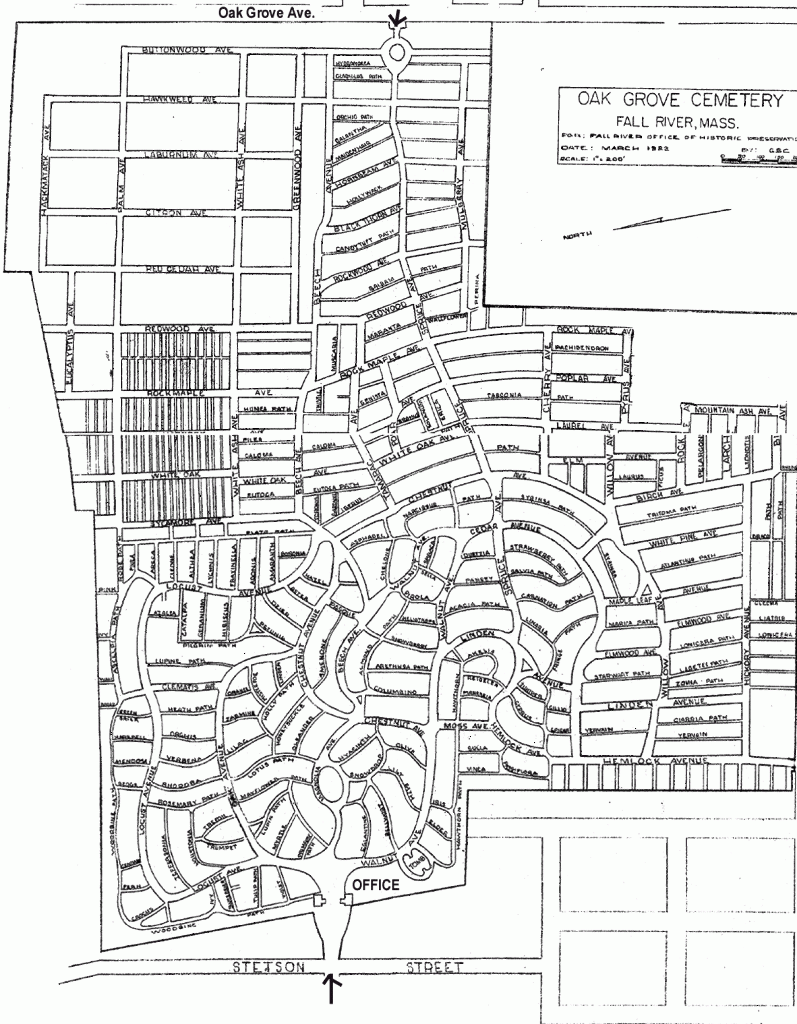Oak Grove Cemetery in Fall River is a place rich with history, and acts as the final resting place for many of the notable figures that emerged from the city. Located at 765 Prospect Street, it is a Victorian Memorial park created in the likes of Mount Auburn. Established in 1855, the cemetery was designed by Josiah Brown whose hands also played a part in the design of many local mills. The cemetery has greatly expanded from 47 acres acres at its inception to over 100 acres today.
Built on a plot of elevated land, Oak Grove Cemetery is the burial ground for many brilliant minds and elite mill-owning families throughout Fall River history. The centralized wealth and high status of its inhabitants is visible in the intricate, decorative elements featured throughout the cemetery. One of the most prominent representations of this artistic design is the Gothic Revival Arch positioned at the main entrance of the cemetery, which was formed from granite quarries in Fall River.

For a brief history of Oak Grove Cemetery, watch the short video by the Friends of Oak Grove Cemetery!
For a brief walk-through of the notable figures buried in Oak Grove Cemetery, keep on reading!
Lewis Howard Latimer
Lewis Howard Latimer (September 4, 1848 – December 11, 1928) was an influential inventor and celebrated patent drafter who aided Thomas Edison in the invention of the light bulb during the 19th century. Buried in Fall River’s Oak Grove Cemetery, Latimer was supplied a long overdue headstone on his gravesite in September of 2023.
Lewis A. Latimer had a rather layered family history. His parents escaped slavery in the South through the network of the Underground Railroad, finally settling in Boston. After a tumultuous period where Lewis’ father, George Latimer’s freedom was threatened, a free Black minister paid for George Latimer’s freedom which allowed his family to stay in the Boston area.
Lewis A. Latimer was born in Chelsea in 1848, and even fought in the Navy during the tail end of the Civil War despite his youth. He took a step towards solidifying his later career when he worked in the office of a patent clerk. Latimer’s skill was recognized and he was eventually promoted all the way up to head draftsman.
In 1876, Latimer had a big break when he was hired to create the blueprints for the Alexander Graham Bell’s telephone, successfully submitting the patent just hours before a fellow rival.
Latimer invented a myriad of things including electric lamps, a railroad toilet, a tool to support books on shelves and even an early air conditioning device. In the 1880s, Latimer became the preeminent expert on electric lighting systems in both New York and Philadelphia, where he installed some of the first electric lighting systems in the area. He helped to democratize the electric lighting industry by increasing its affordability.
At General Electric, alongside Thomas Edison, he installed himself as the resident patent expert and invented a new way to create the carbon filament for light bulbs that resulted in much greater longevity.
Latimer had many skills that extended beyond inventing alone, including music, painting, poetry and playwriting. He was also an active member of the early movement for Black Civil Rights.
Latimer’s connection to Fall River materialized with his marriage to Mary Lewis on Robeson and Bedford Streets on November 15, 1873.
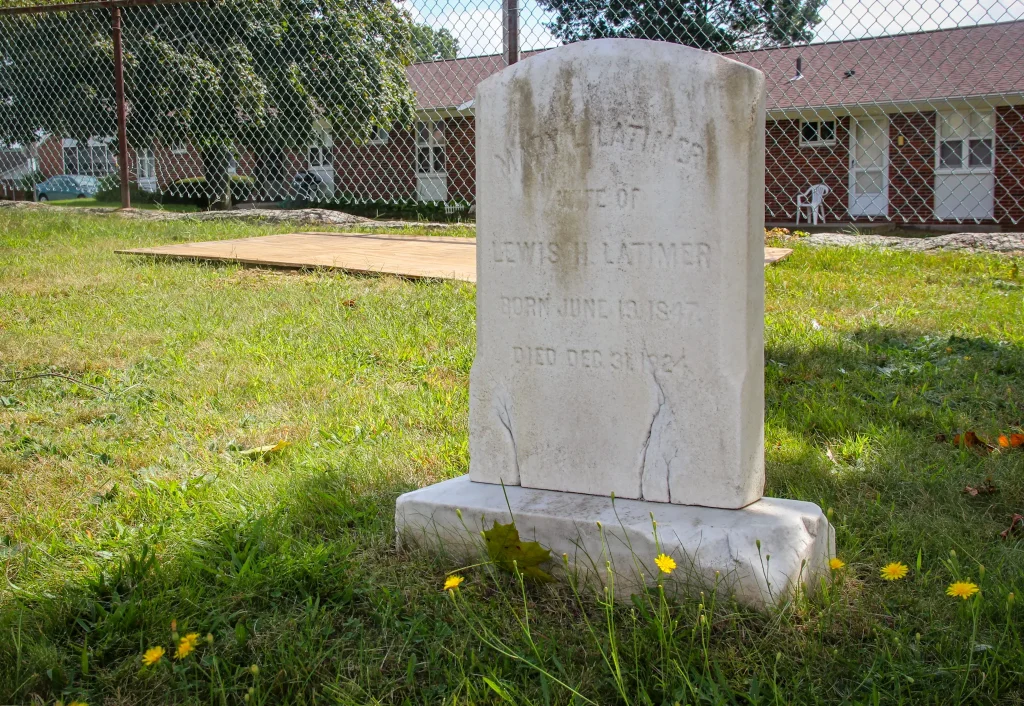

Lizzie Borden
Lizzie Borden is no doubt an important Fall River figure to have been buried in Oak Grove Cemetery.
She is the face of a notorious story involving the brutal axe murder of her father, Andrew Borden and stepmother, Abby Borden in 1892.
Brought to trial, an exact record of Lizzie’s whereabouts on the day of the murders was difficult to attain. There were a variety of contradicting testimonies which emerged from police officers and family members alike, all of which further complicated the trial.
While Lizzie was eventually acquitted at the trial, she continued to be regarded as the main suspect and was cast aside by her community in Fall River. Changing her name from Lizzie to Lizbeth, and moving to a new house in “The Hill” neighborhood, Lizzie lived an exiled life. She died on June 1, 1927 after the removal of her gallbladder.
The grave of Lizzie Borden is cited to be one of the most frequently visited gravesites at Oak Grove Cemetery.

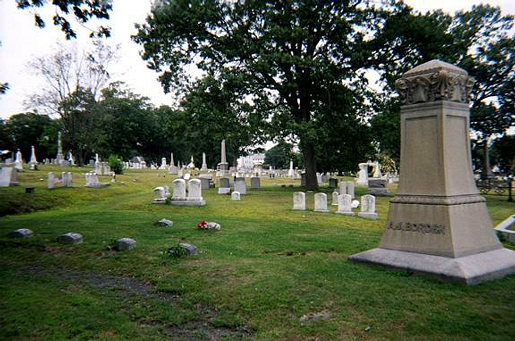
(Image Credit: Friends of Oak Grove Cemetery)
To visit the Borden plot, enter through the Prospect Street Arch and veer left, following the black arrows on the asphalt.
Foster H. Stafford
One of the most unique memorial sites in the Oak Grove Cemetery is the miniature Granite Mill that recalls the life and achievements of prominent Fall River mill owner, Foster H. Stafford.
Foster H. Stafford was the first president of The Stafford Mills, which began its operations in 1870. The Stafford Mills contained three structures – two mills built in 1872 and 1888, respectively, as well as a detached office building constructed in 1892. The mills were very successful, manufacturing print cloth until their closure in 1929.
Stafford’s grave at Oak Grove Cemetery depicts a model mill, meticulously detailed, with outlines of windows and doors used for loading as well as small keyholes carved through the granite. Stafford requested this monument as an homage to his business exploits, and the structure was erected shortly following his death in 1892. Positioned on an elevated portion of the cemetery, its placement allows for a vast, panoramic view of the many lasting smokestacks in the city.
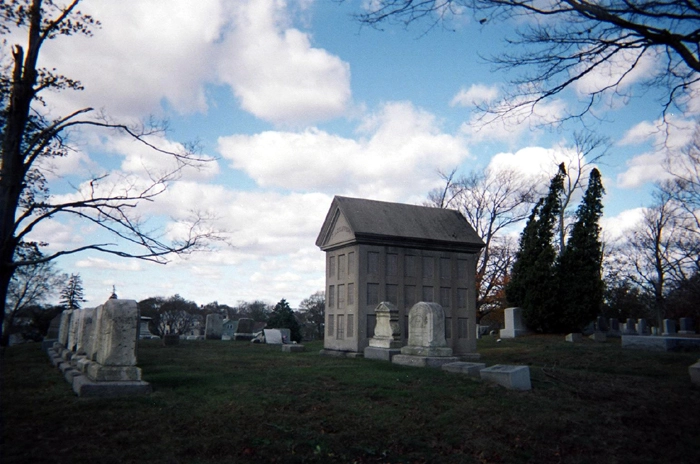

Other Notable Burials
- Thomas Almy (1819–1882), co-founder of The Herald News.
- Abby Durfee Borden (1828–1892), second wife of Andrew Jackson Borden and murder victim.
- Andrew Jackson Borden (1822–1892), businessman and murder victim.
- Nathaniel Briggs Borden (1801–1865), Mayor of Fall River (1856–1857), US Congressman, and founder of Pocasset Mills.
- Colonel Richard Borden (1795–1874), industrial pioneer, businessman.
- Lizzie Borden (1860–1927), alleged (acquitted) murderer.
- Emma Borden (1851–1927), sister of Lizzie Borden, daughter of Andrew and Sarah Borden.
- Sarah Morse Borden (1823–1863), first wife of Andrew Jackson Borden and mother of Lizzie Borden and Emma Borden.
- Spencer Borden (1872–1952), manufacturer, delegate to 1924 Republication National Convention, served as director on boards of a number of local concerns.
- Charlie Buffinton (1861–1907), Major League Baseball player.
- James Buffington (1817–1875), the first mayor of Fall River.
- Earle Perry Charlton (1863–1930), founder of E. P. Charlton & Co. 5 & 10 stores chain. Through mergers, he became a co-founder of the F. W. Woolworth Company.
- Benjamin Cook, a District Court judge.
- Sarah M. Cornell (1803–1832), found murdered on the John Durfee Farm in nearby Tiverton, Newport County, RI. She was originally buried there and moved to Oak Grove.
- Robert T. Davis (1823–1906), mayor of Fall River and United States Representative from Massachusetts.
- Bradford Matthew Chaloner Durfee (1843–1872), born into a wealthy and influential Fall River family, he was a philanthropist who died in his prime. As a memorial, his mother had the local school board erect the B. M. C Durfee High School.
- Nathan Durfee (1799–1876), early industrialist and deacon of Central Congregational Church.
- William Thomas Grant (1876–1972), founder of W. T. Grant Department Store chain and philanthropist.
- William S. Greene (1841–1924), United States Representative from Massachusetts, also mayor of Fall River.
- Cornelius Hargraves (1809–1874), an immigrant from England who, in 1851, founded Hargraves Manufacturing Company, a soap and glue substitute manufacturing operation.
- Reuben Hargraves (1834–1905) and Thomas Hargraves (1836–1904), sons of Cornelius Hargraves are buried in the Hargraves Mausoluem.
- Mary Evelyn Hitchcock (1849–1920), author and explorer
- James Holehouse (1839–1915), received the Medal of Honor for bravery at the Battle of Chancellorsville on May 3, 1863. He was a private in Company B, 7th Massachusetts Volunteer Infantry.
- Grace Hartley Howe (1874–1955), wife of Louie Howe and delegate to the 1936 Democratic National Convention.
- Louis McHenry (“Louie”) Howe (1871–1936), political strategist who masterminded Franklin D. Roosevelt’s 1932 presidential election. He was the only close friend both FDR and Eleanor Roosevelt shared in common.
- Andrew Jackson Jennings (1849–1923), noted local attorney, now best remembered for successfully defending Lizzie Borden.
- Lewis Howard Latimer (1848–1928), African-American inventor and engineer who collaborated with Alexander Graham Bell and Thomas Edison.
- John O. Milne, co-founder of The Herald News.
- Lt. Joseph S. Milne (1842–1863), mortally wounded at Pickett’s Charge, Battle of Gettysburg; died July 8, 1863, temporarily attached to Battery B 1st Rhode Island Light Artillery.
- James Madison Morton (1837–1923), an Associate Justice of the Supreme Judicial Court of Massachusetts.
- James Madison Morton, Jr. (1869–1940), a Federal judge.
- Maude Frances Darling Parlin (1885–1979), pioneer female architect and 1907 M.I.T. graduate who designed many Fall River buildings and homes.
- Cornelia Otis Skinner (1899–1979), actress, biographer, dramatist, essayists, novels, and screenwriter.

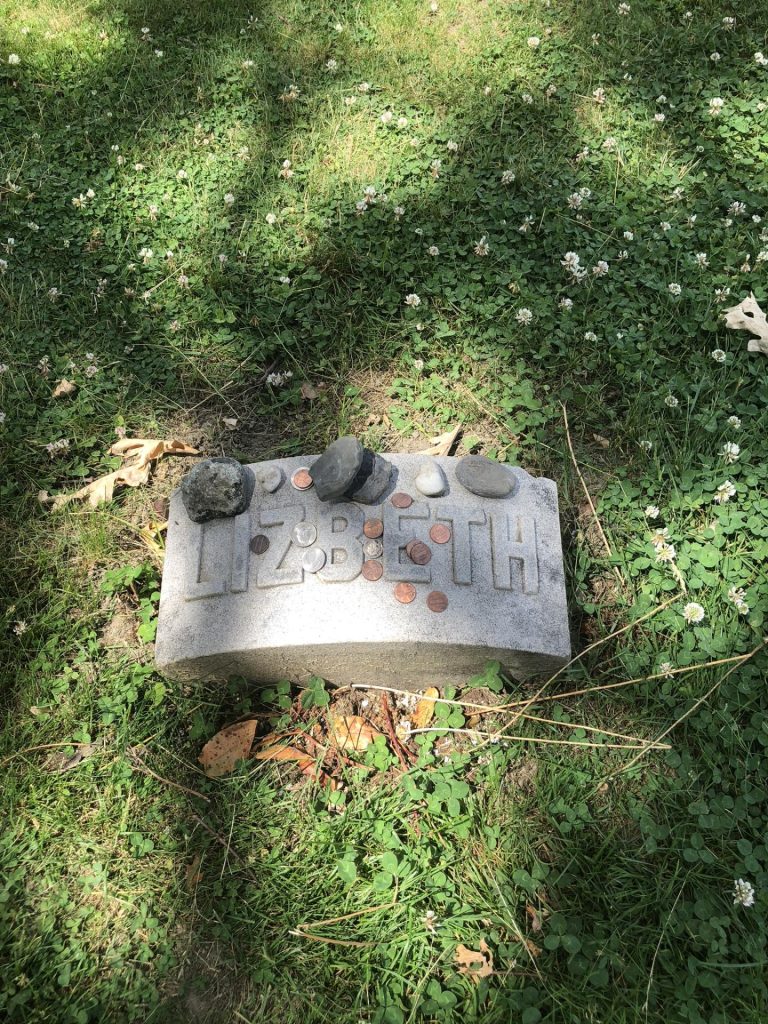


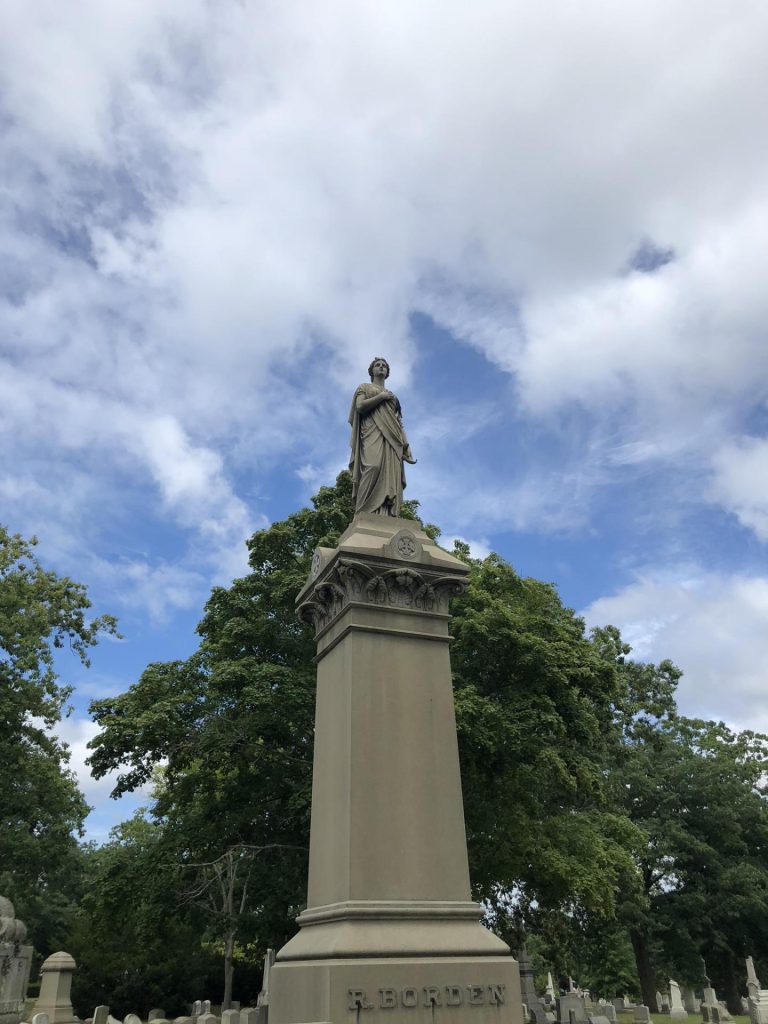

Where Can I Learn More?

For more in depth information on the history of Oak Grove, the burial customs of the Victorian era, and much more, visit the website of The Friends of Oak Grove, a 501 (c) (3) organization dedicated to the preservation of the Oak Grove Cemetery.
CLICK HERE TO VISIT.
Plan your visit
Now that you have some background knowledge, it’s time to plan your visit to Oak Grove Cemetery!
See HERE for an interactive map, where you can search the “Persons of Interest” tab to locate the locations of specific plots.
Peruse the static map below:
